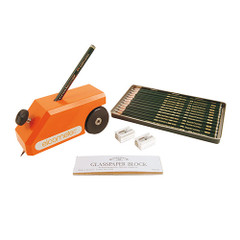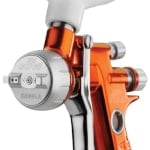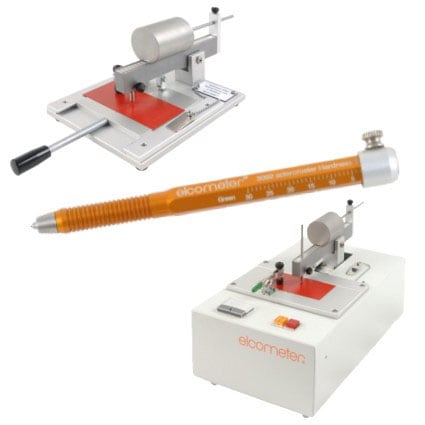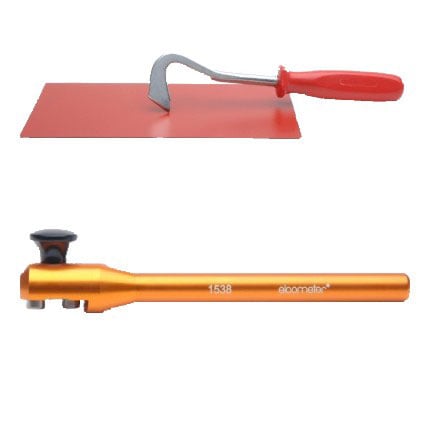|
|
|
Hardness and Scratch
 |
Hardness can be defined as a material's resistance to permanent deformation. In the coatings industry, hardness measurement can be used to determine the resistance of the coating to scratching from general wear and tear and also if a coating is fully cured.
The term "Hardness" is used to refer to different properties of material, specifically:
- Resistance to scratch and wear
- Resistance to penetration
Depending on the requirements, there are various methods for testing hardness. Some are dedicated to characterize coatings and others are more suitable for testing bulk materials such as metals, plastics, rubber or elastomers.
Resistance to Scratch and Wear Method:
To assess a coating’s resistance to scratch there are a number of different instruments that can be used:
- Pencil Hardness Tester - marking
- Sclerometer - scratch
- Clemen Apparatus - scratch/indentation
- Scratching and Shearing Instrument - scratch
- Pendulum Hardness - amplitude
Resistance to Indentation Method:
There are many instruments available to assess the resistance to penetration. For coatings in particular, there are three common methods where the depth of penetration of a weighted tool is used to show the coating’s resistance to penetration:
|
These easy to use hardness testers are ideal for testing the hardness of soft metals, plastics, fiberglass and leather. Making sure the indent point is perpendicular to the surface being tested, the instrument is placed onto the sample and a light pressure is exerted against the instrument driving the spring-loaded indent point into the material and the hardness reading is instantly indicated on the dial. No waiting, pre-loading or separate measurements are required.
|
Measuring a coating's hardness using the indentation method, the Elcometer 3095 Buchholz Hardness Tester consists of a beveled disc indenting tool which is fitted into a stainless steel block exerting a constant test load of 500g (17.6oz).
The gauge is placed on to the coating for 30 seconds and the length of any subsequent indentation in the coating is measured using the graduated microscope. The result is expressed as units of Buchholz Indentation resistance using the scale printed in the operating instructions.
|
The pencil hardness test, also referred to as the Wolff-Wilborn test, uses the varying hardness values of graphite pencils to evaluate a coating’s hardness. The pencil hardness test is perhaps the most simple form of hardness test. Pencils are pushed into the sample and the coating hardness is identified by the trace generated.
There are two scales to grade the hardness of a pencil's graphite core. The first is a numerical scale; the higher the number the harder the marking core. As the core becomes softer in the lower numbers it leaves more graphite on the material and a darker mark. The second scale is the HB graphite scale; the "H" represents the hardness while the "B" indicates blackness.
|
A range of products designed to allow the user to measure a coating resistance to scratching.
|
A range of simple tools designed for sample preparation in advance of corrosion testing.
|
View Shore Durometer Hardness Scale Infographic The Elcometer 3120 range of Shore Durometers is widely used to test the hardness of soft materials. A round point indents the material under a fixed force spring and the hardness is displayed on the dial in Shore Hardness Units.
The Elcometer Shore Durometer can be either hand held or fitted to an optional stand for increased repeat-ability.
The Elcometer 3120 range of Shore Durometers encompasses a number of hardness values. Please refer to the table below.
|
|
|
|
|
|




















